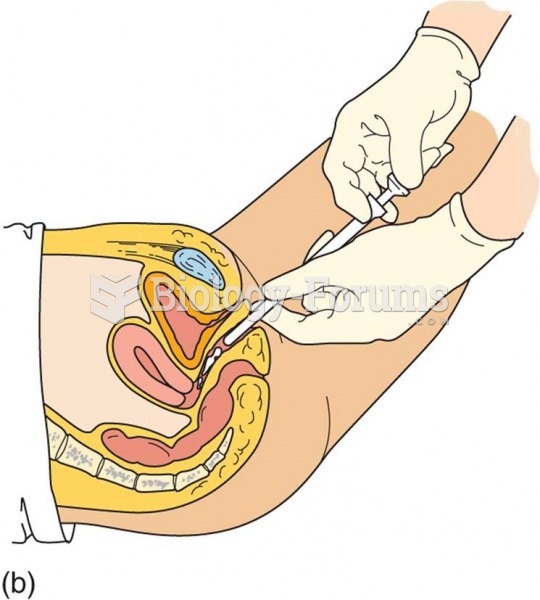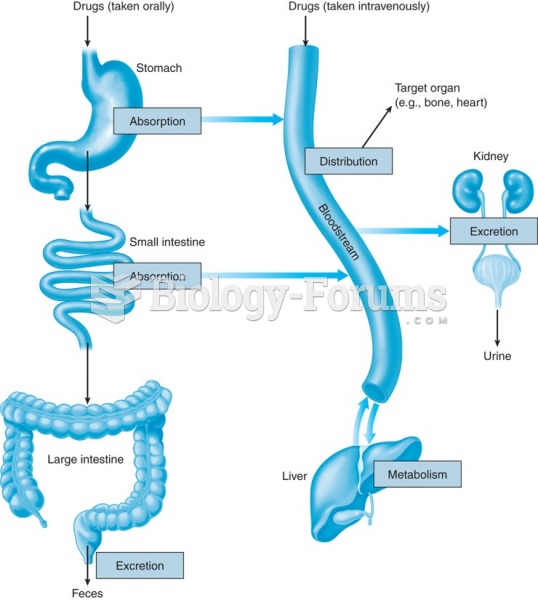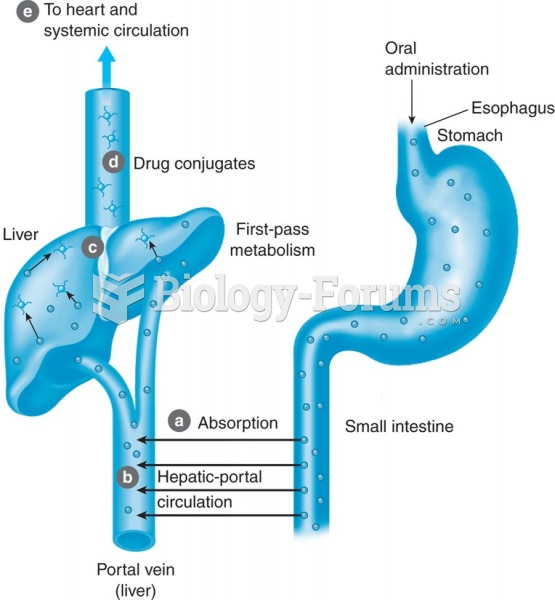This topic contains a solution. Click here to go to the answer
|
|
|
Did you know?
There are more sensory neurons in the tongue than in any other part of the body.
Did you know?
In 2006, a generic antinausea drug named ondansetron was approved. It is used to stop nausea and vomiting associated with surgery, chemotherapy, and radiation therapy.
Did you know?
In ancient Rome, many of the richer people in the population had lead-induced gout. The reason for this is unclear. Lead poisoning has also been linked to madness.
Did you know?
When blood is exposed to air, it clots. Heparin allows the blood to come in direct contact with air without clotting.
Did you know?
It is widely believed that giving a daily oral dose of aspirin to heart attack patients improves their chances of survival because the aspirin blocks the formation of new blood clots.
 Intramuscular drug administration: (c) the needle is inserted at a 90° angle: Source: Pearson Educat
Intramuscular drug administration: (c) the needle is inserted at a 90° angle: Source: Pearson Educat
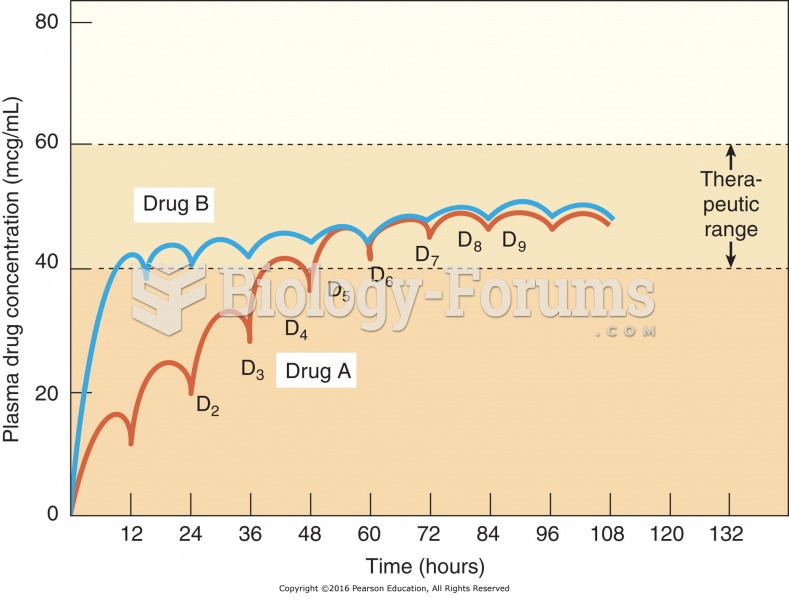 Multiple-dose drug administration. Drug A and drug B are administered every 12 hours. Drug B reaches ...
Multiple-dose drug administration. Drug A and drug B are administered every 12 hours. Drug B reaches ...
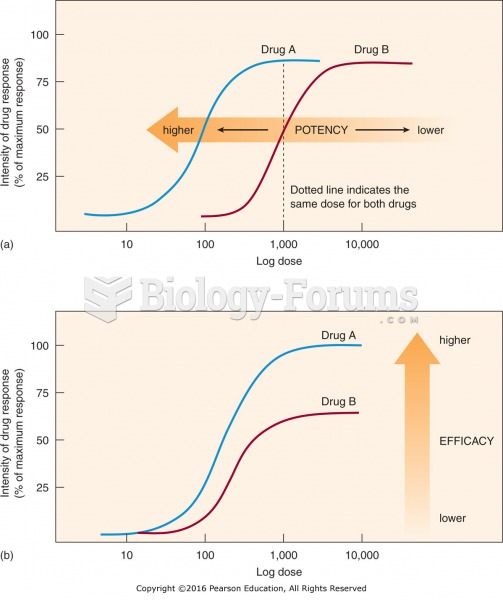 Potency and efficacy: (a) Drug A has a higher potency than drug B. (b) Drug A has a higher efficacy ...
Potency and efficacy: (a) Drug A has a higher potency than drug B. (b) Drug A has a higher efficacy ...


